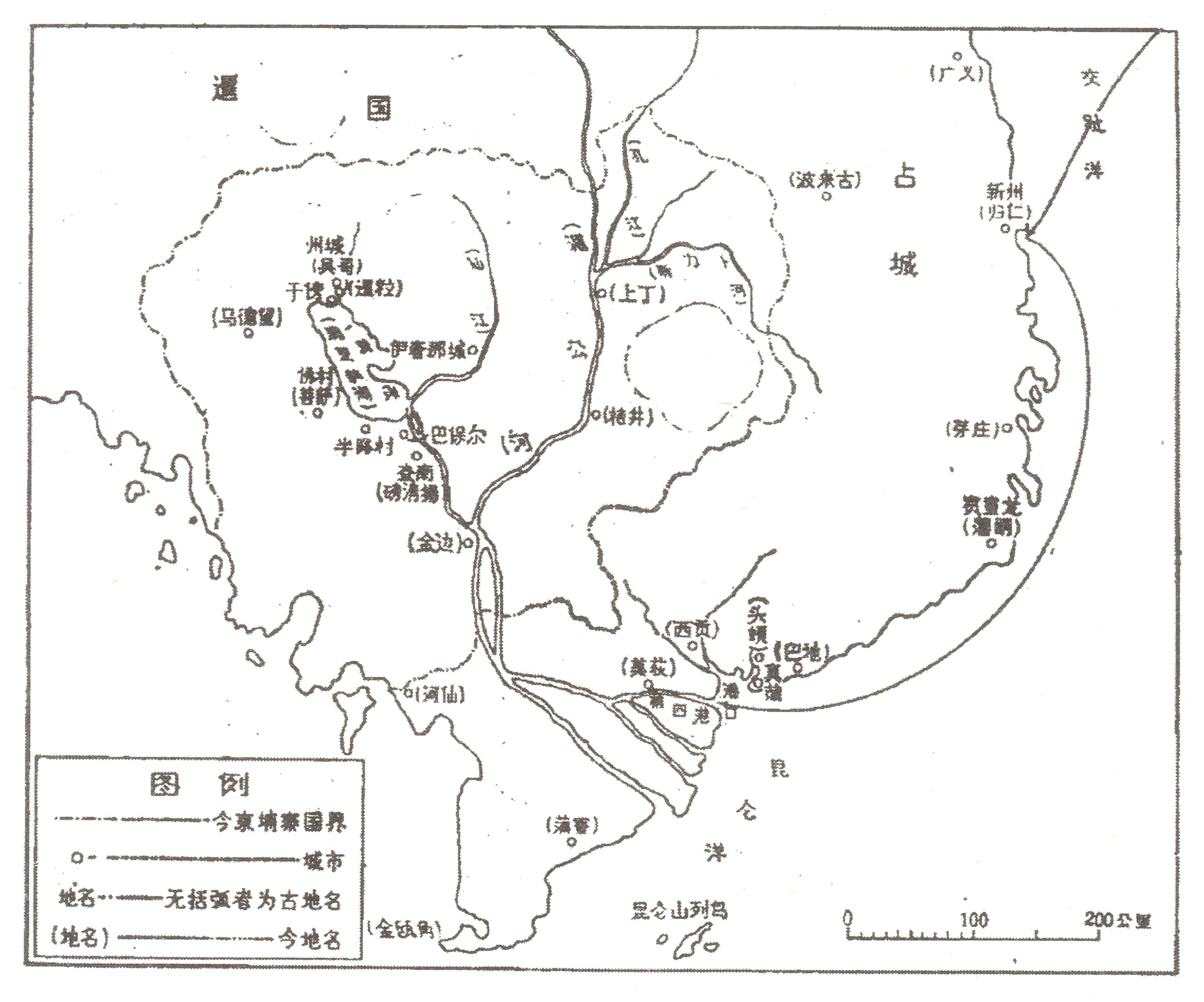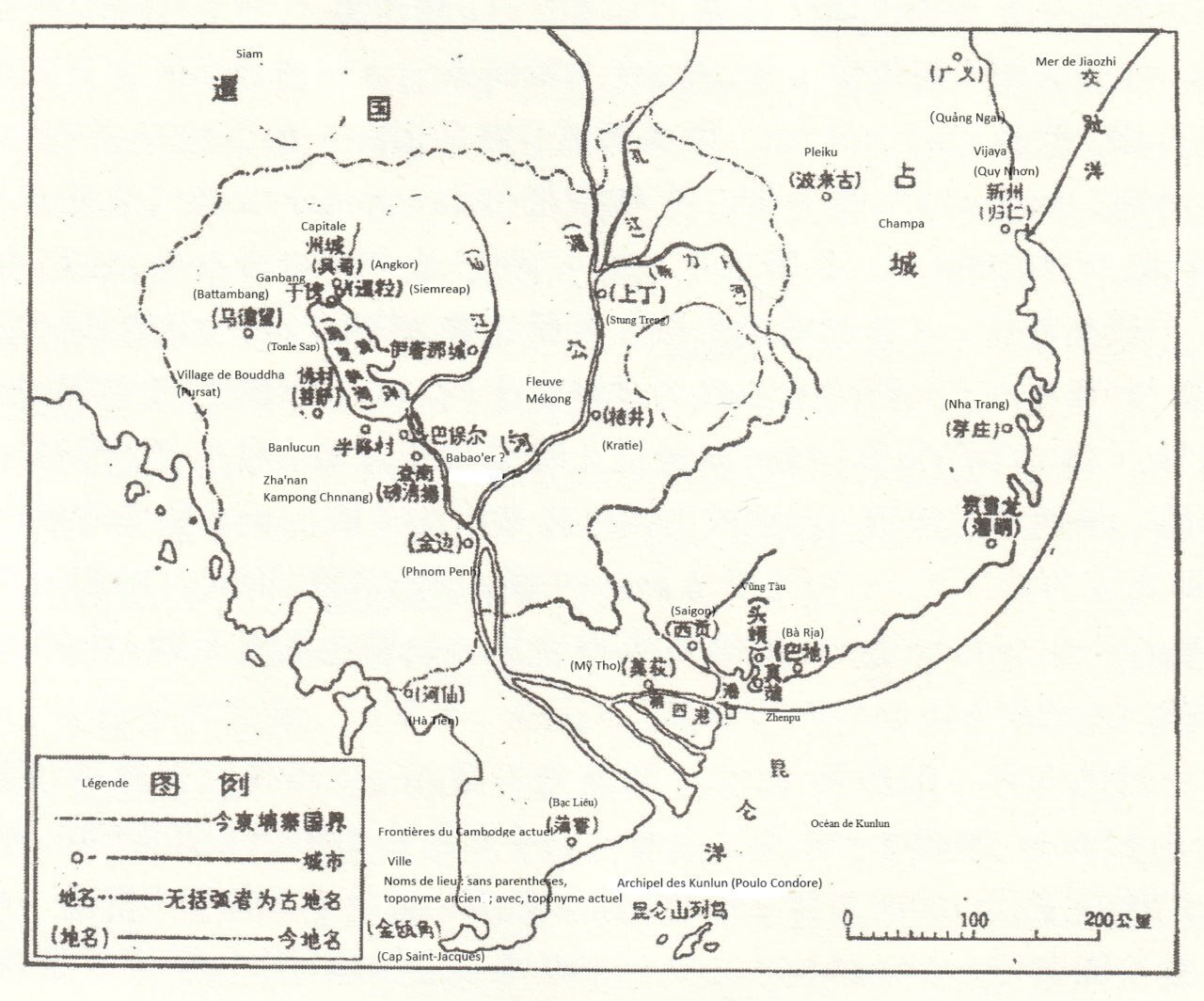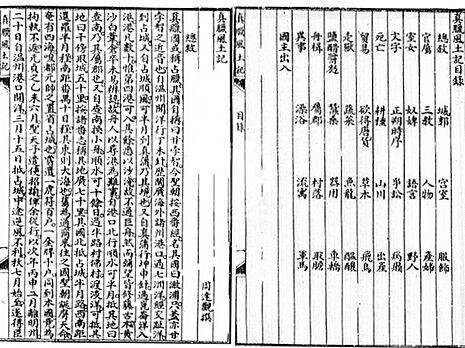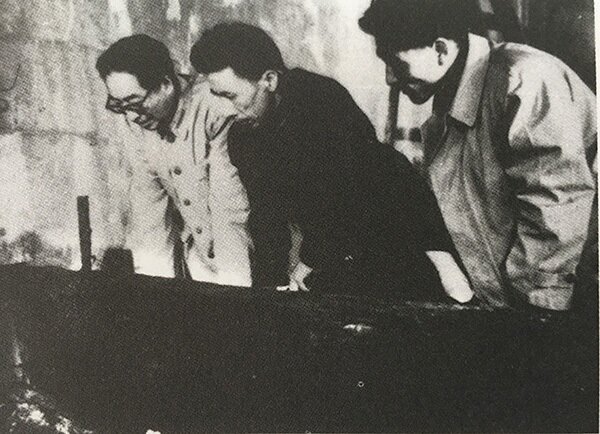真腊风土记 [Revision and Annotation of The Land and Social Conditions of Chenla], by Xia Nai
by Zhou Daguan & Nai Xia
吴哥数据库的最新收录书籍,周达观于1296年所记录的吴哥见闻《真腊风土记》:1/原本的复印本 2/2016年新版的由中国考古学家夏鼐于1981年所著的真腊风土记校注
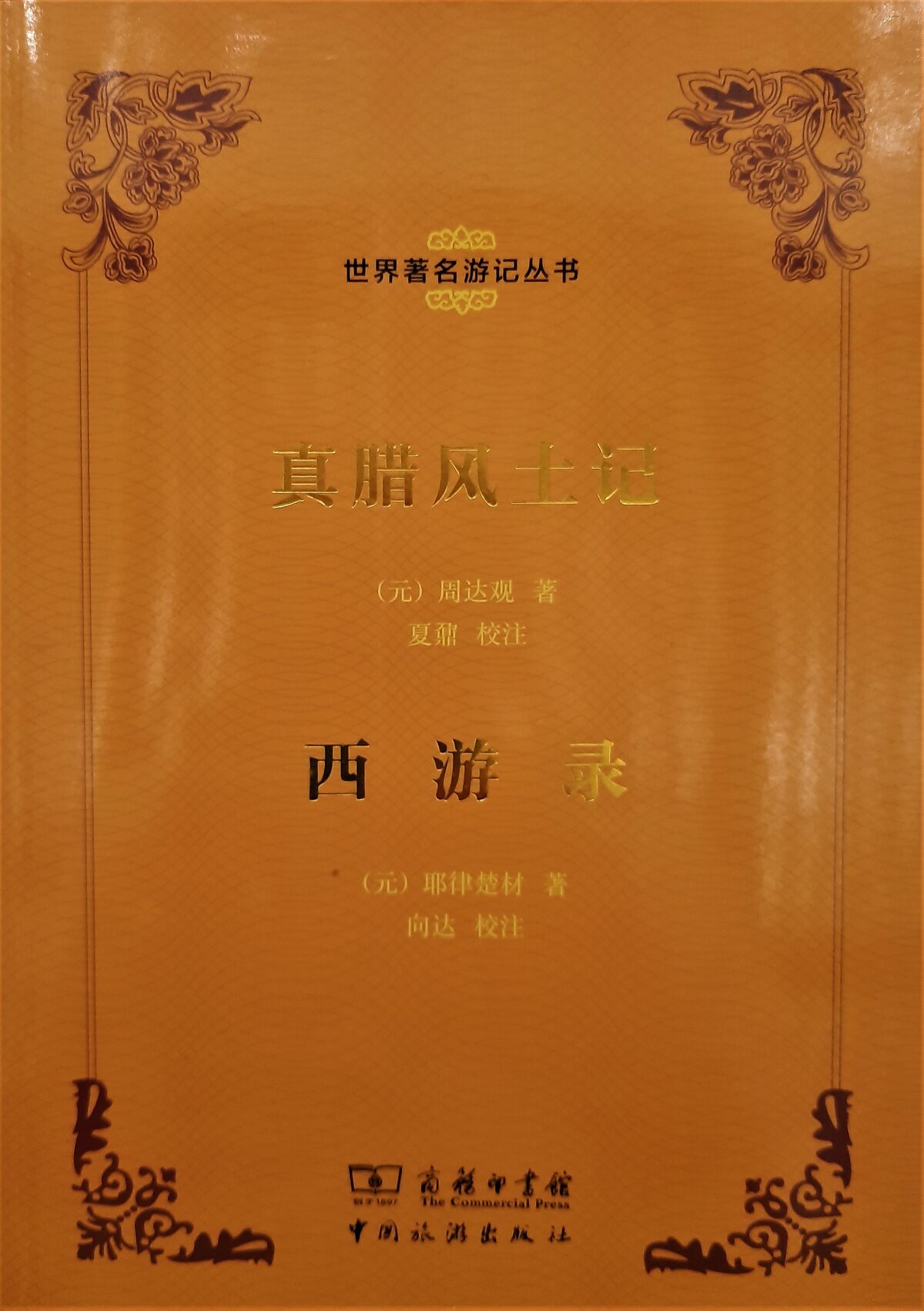
- Format
- hardback
- Publisher
- The Commercial Press, Beijing, China
- Edition
- Republication of the 1981 edition.
- Published
- 2016
- Authors
- Zhou Daguan & Nai Xia
- Pages
- 196
- ISBN
- 978-7-5032-5477-2
- Language
- Chinese
Zhou Daguan’s famous description of Angkor from his 1296 visit: 2016 republication of the 1981 annotated edition by renowned Chinese archaeologist Xia Nai.
ការបន្ថែមចុងក្រោយបំផុតទៅក្នុងបណ្ណាល័យAngkor Database
ពីការពិពណ៌នាពីអង្គរដ៏ល្បីល្បាញរបស់លោក Zhou Daguan ពីឆ្នាំ ១២៩៦: ២០១៦ នៃការបោះពុម្ពផ្សាយឆ្នាំ ១៩៨១ ដោយអ្នកនិពន្ធបុរាណវិទូជនជាតិចិនឈ្មោះ Xia Nai។
吴哥数据库的最新收录书籍,周达观于1296年所记录的吴哥见闻《真腊风土记:2016年新版的由中国考古学家夏鼐于1981年所著的真腊风土记校注
This is the most complete work on Zhou Daguan’s testimony, as the author has identified and reviewed no less than eleven versions of the original texts, while Paul Pelliot in his time knew of only three. The text here annotated and commented contains 8,500 words in Chinese.
Among the many clarifications brought by this edition, these maps of the itinerary followed by Zhou Daguan:
交 趾 洋, (波来古), 占, 新州 (归仁), 城 , (芽庄), (吳哥), (货暹粒), (上丁), 佛村 : Cochin Ocean, (Pleiku), Cham, Tanzhou (Quy Nhon), Tang, (Nha Trang), (Angkor), (Siem Reap), (Stung Treng), Buddha Village (Pursat),
ADB Input: The Customs of Zhenla remains a reference for Chinese students, as in this 2017 test presentation for a college entrance examination in general knowledge:
高考历史-知识库-《真腊风土记》
2017-05-28 06:40
《真腊风土记》是一部介绍位于柬埔寨地区的古国真腊历史、文化的中国古籍。《真腊风土记》由元代人周达观所著。
它对当代及现代研究真腊及吴哥窟起了非常重要的作用。是现存与真腊同时代者对该国的唯一记录。清代的《四库全书总目提要》称此书“文义颇为赅赡,本末详具,可补元史佚阙。”
元成宗元贞元年(1295年),浙江温州人周达观奉命随使团前往真腊,使团取海路从温州开洋,经七洲洋,占城、真蒲、查南、半路村、佛村,横渡淡洋至吴哥国登岸。
周达观逗留约一年后于1296年7月回中国。回国后以游记形式创作了《真腊风土记》。
College Entrance Examination History-Knowledge Base- “Zhenla Customs”
2017-05-28
“Chenla Customs” is an ancient Chinese book that introduces the history and culture of Chenla, an ancient country located in Cambodia. “Zhenla Fengtu Ji” was written by Zhou Daguan, a man from the Yuan Dynasty.
It plays a very important role in contemporary and modern research on Chenla and Angkor Wat. It is the only surviving record of the country by Chenla’s contemporaries. The “Summary of the General Catalog of Sikuquanshu” of the Qing Dynasty said that this book “is quite comprehensive in its meaning and detailed in its entirety, which can fill in the missing gaps in the history of the Yuan Dynasty.“
In the first year of Yuanzhen (1295) of Yuan Chengzong, Zhou Daguan, a native of Wenzhou, Zhejiang, was ordered to go to Chenla with the mission. The mission took the sea route from Wenzhou to Kaiyang, passed through Qizhouyang, and visited Champa, Zhenpu, Chanan, Banlu Village, Buddha Village [Pursat], crossing the ocean and landing at Angkor Kingdom. Zhou Daguan returned to China in July 1296 after staying for about a year. After returning to China, he wrote “Zhenla Fengtu Ji” in the form of travel notes. [source: Zohu.com]
This edition includes 西游录 (Journey Towards West) , written by 耶律楚材 (Yelu Chucai), a record of this important statesman and Confucian scholar’s journey when he accompanied Genghis Khan’s armies to the west for Persia between 1219 and 1224.
Tags: Chinese chronicles, Chenla, Kampuchea, history, Zhou Daguan
About the Authors
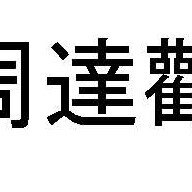
Zhou Daguan
Zhou Daguan (also Tcheou Ta-Kouan, Zhu Daguan) ch 周达观 , kh ជីវតាក្វាន់ (chiv takvan), vn Chu Đạt Quan, th โจวต้ากวาน (cho wta kwan)(c. 1270, Yongjia (modern Wenzhou) – ? shortly after 1346), a Chinese traveler under the Temür Khan (Emperor Chengzong), authored the sole written and direct account of the customs of Cambodia and the Angkorean power from the 13th century that has been preserved to our days.
Instructed to join an imperial mission to Chenla in 1295, he arrived at Angkor in August 1296 and stayed near the court of King Indravarman III (also named Sri Srindarvarman) until July 1297. We know only a third of his account, The Customs of Cambodia (真臘風土記, Zhēnlà Fēngtǔ Jì, literally The Land and Social Conditions of Chenla), first translated into French by the sinologist Jean-Pierre Abel-Rémusat in 1819 (Description du royaume de Cambodge par un voyageur chinois qui a visité cette contrée à la fin du XIII siècle, précédée d’une notice chronologique sur ce même pays, extraite des Annales de la Chine, Paris, Imprimerie J. Smith, 1819), and later on by Paul Pelliot in 1902 (1) and posthumously in the 1951 edition edited by George Coedes and Paul Demieville. In 2007, the linguist Peter Harris completed the first direct translation from Chinese to modern English.
Coincidentally, Zhou Daguan’s travel to Angkor occurred the same year than “the trader and adventurer Marco Polo arrived back in Venice after twenty-five years’ absence. Legend has it that he was full of stories about his travels in China and other parts of Asia, and about the services he provided to the great khan Khubilai, the founding emperor of the Mongol dynasty then ruling China. That same year, 1295, a young man by the name of Zhou Daguan set sail from Mingzhou, a port on the southeast coast of China. Zhou was headed for Cambodia as part of a delegation sent there by Khubilai’s grandson Temür, who had come to the imperial throne on the death of his grandfather.” (cf. Peter Harris, A Record of Cambodia, p 6).
We still have to conjecture in which capacity Zhou Daguan joined the delegation, but we know he was not a diplomat acting for the Yuan dynasty, nor a trader. The “Summary of the General Catalogue of the Complete Library of the Four Treasures” of the Qing Dynasty, praising the book as “quite comprehensive and rich in meaning, with many details, which can make up for the missing parts of the Yuan History,” mentions its author as a “lettered man.”
As for the name Daguan 达观, which he used after his trip to Chenla, several interpretations have been given: “the one who saw everything”, “at ease in every circumstance”, “who sees the bright side of everything”.
Sinologist and Khmerologist Pascal Médeville is currently working on a novelized account of Zhou Daguan’s life and travels. And in December 2024, Princess Buppha Devi Dance School presented in Phnom Penh the first musical and dance production inspired by the journey of Zhou Daguan, លោក ជីវ តាក្វាន់ បានជួបនគរចេនឡា Zhou Daguan in the Kingdom of Chenla.
Angkor Database recommends the direct translation established from the ancient Chinese text into English by native Chinese Ms. Beling Uk and native Cambodian Solang Uk in 2010 and 2011. Xia Nai’s 1981 Chinese edition of the travelogue remains a reference. The first ever English version published in Bangkok in 1967, entirely from Pelliot’s French text (the1902 version), is mostly notable for its enigmatic author, John Gilman D’Arcy Paul.
Customs of Zhenla has also been translated into:
- Khmer: កំណត់ហេតុរបស់លោក ជីវ តាក្វាន់ អំពីប្រពៃណីនៃអ្នកស្រុកចេនឡា [Chiv Ta Kwan [Zhou Daguan]‘s diary about the traditions of the people of Chenla], tr. Ly Team Teng, 1971, Phnom Penh.
- Thai: โจวต้ากวาน, บันทึกว่าด้วยขนบธรรมเนียมประเพณีของเจินละ เฉลิม ยงบุญ [Record of Chenla’s customs and traditions], tr. Chalerm Yongbunkerd, 2014 (3d edition) — ISBN 978−974−02−1326−0.
- Vietnamese: Chu Đạt Quan, Chân Lạp phong thổ ký [Zhou Daguan, Chenla Land and People], tr. Lê Hương, Saigon, Kỷ Nguyên Mới Pub., Saigon, 1973 [excerpts in Vietnamese here].
- German: Walter Aschmoneit, Zhou Daguan, Aufzeichnungen über die Gebräuche Kambodschas, Studeingemienschaft Kambodschanische Kultur, 2006, 120 p., ISBN13 978 – 3000200724.
- Spanish: Vida y costumbres de Camboya, Relato del viaje de Zhou Daguan a Angkor, by Astrid Haardt, CreateSpace Independent Publishing Platform, 2013, 108 p., ISBN13 978 – 1478384496.
(1) In Antoine Brébion’s Dictionnaire Bibliographique, the entry Tcheou-Ta-Kouan states: ‘Lettré chinois du XIIIe siècle de notre ère, qui avait pour appellation Ts’ao-T’ING; il était originaire de Yong-Kia au Tchô-Kiang, il suivit l’ambassade chinoise envoyée au Cambodge en 1295, il revint en Chine en 1297. Le très érudit sinologue qu’est M. P. PELLIOT, de l’Ecole française d’Extreme-Orient, lui a restitué la paternité d’une relation intitulée Description du Cambodge, qu’ABEL DE RÉMUSAT avait attribuée à MA-TOUAN-LIN.’ [Chinese erudite from the 13th century CE, who was named Tsao-Ting, hailing from Yong-Kia in Tcho-Kiang. He followed the Chinese embassy sent to Cambodia in 1295, traveling back to China in 1297. The most learned sinologist Mr P. PELLIOT, from EFEO, has given back to him the autorship of a text titled ‘Description of Cambodia’, previously attributed to MA-TOUAN-LIN by ABEL DE RÉMUSAT.]
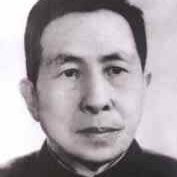
Nai Xia
Xia Nai (夏鼐, 1910, Wenzhou, Zhejiang Province, China – 19 June 1985) was an eminent Chinese archaeologist, celebrated on the international academic scene as a member of the British Academy (1974), the Swedish Royal Academy of Letters, History, and Antiquities (1983), the U.S. Academy of Sciences (1984), the Italian Institute of Far Eastern Studies, the Third World Academy of Sciences and the German Institute of Archaelogy.
After majoring in economic history at Tsinghua University in Beijing (1934), he studied Egyptology at the University College of London and later joined the Beijing Central Museum. A professor at Zhejiang University, he worked on many excavation sites in China (including the discovery of the Yin ruins in Anyang, dating back to the Shang dynasty) and was appointed Director of the Institute of Archaeology within the Chinese Academy of Social Sciences (CASS) (1962 – 1982).
Persecuted and submitted to ‘re-education’ during the Cultural Revolution, between 1966 and 1972, he resumed his academic and field work afterwards and published in 1981 a major, annotated edition of Zhou Daguan’s Customs of Cambodia. He also contributed to the development of the Wenzhou Museum, Wenzhou being his and the famous Chinese traveler Zhou Daguan’s hometown.
In Anyang,1935 (Source: School of Archaeology and Museology)
Xia Nai (center) checking findings at the Ding Mausoleum (Ming Dynasty) near Beijing, 1958 (Source: China Daily)


